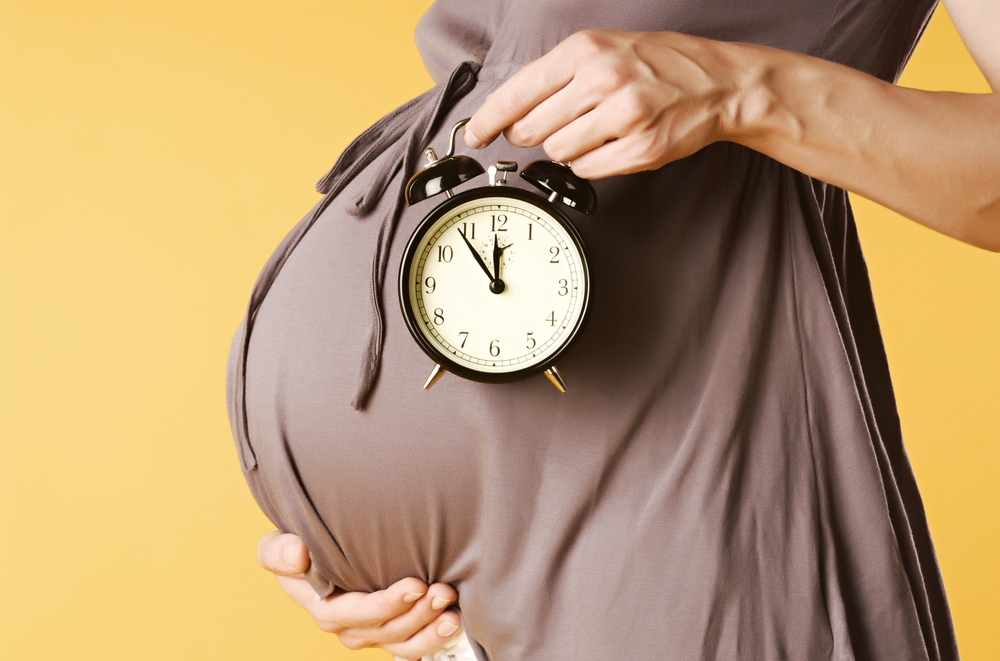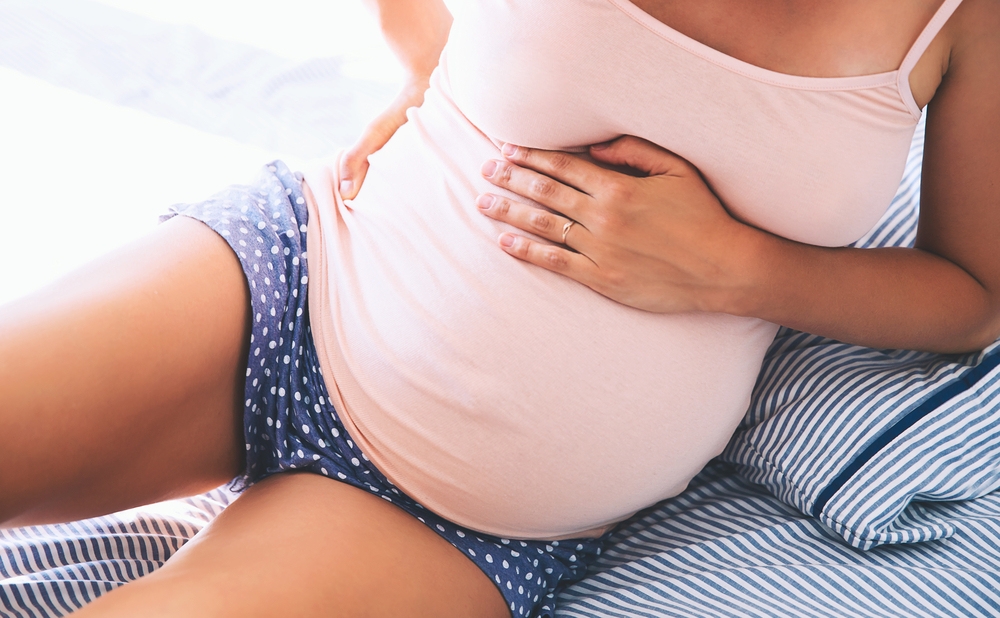Under normal circumstances, pregnant mothers need to go through three stages of labor to give birth to their babies.
The first stage of labor is cervical dilatation, from regular uterine contraction to full opening of uterine orifice. The second stage of labor is the delivery period of the fetus, which refers to the period from the full opening of the uterus to the delivery of the fetus. The third stage of labor is the placental delivery period, from the delivery of the fetus to the delivery of the placenta.
Natural labor, will you experience some what?

First stage of labor
The first stage of labor takes a long time, starting with regular contractions. At first, the contractions are relatively weak, lasting 20-30 seconds and disappearing at intervals of 5-6 minutes. As the stage of labor progresses, the intensity of contractions becomes larger and larger, the duration becomes longer and longer, the interval becomes shorter and shorter, and the opening of the uterus becomes larger and larger.
The sign of full-term labor is regular uterine contraction. When regular abdominal pain occurs, The intensity of abdominal pain is getting stronger and stronger, Can’t relieve after rest, Occurred once in 10 ~ 20 minutes, this must consider regular uterine contraction, to go to the hospital in time. Other pregnant mothers do not have uterine contraction, will find red, there is a small amount of bleeding or brown secretions, this should also pay attention to. Have seen red means in 24 ~ 48 hours or so may be in labor, to be prepared, when the above regular abdominal pain occurs, will go to the hospital to give birth.
If the hospital has a maternity ward for you, During the period before the launch, You can walk around the hospital bed or in the corridor. Going to the toilet, making phone calls and brushing TV plays can relieve anxiety and anxiety, which is good for pain tolerance. Doctors or midwives will often come to check the fetal heart and uterine contraction, and do vaginal finger examination when necessary to understand the uterine orifice. If the situation is not good, cesarean section may be required at any time to let the baby come out early.
Second stage of labor
When the opening of the uterus is fully opened, Entering the second stage of labor, Pregnant mothers are about to go to bed. Midwives and doctors begin to prepare for the arrival of the baby. At this time, uterine contractions will become more and more intensive, lasting for more than 1 minute and with an interval of only 1 minute. Therefore, the pain at this time will reach the peak of pain for pregnant mothers. The stomach is always painful and there is no chance to stop and gasp for breath.
The opening of the uterus here is full, that is, the opening of the uterus is often referred to as ten fingers. Of course, the opening of the ten fingers is not the exact data measured by the ten fingers together, but a general judgment. The opening of the ten fingers is about ten centimeters and has the size of the fetus’s head, so that the baby can be delivered smoothly from the uterus.
After the baby is delivered, the uterus suddenly shrinks, the intensity of uterine contraction is obviously weakened, and the pain plummets. At this time, mothers can take a breath to rest and wait for the placenta to be delivered. This is the third stage of labor.
Third stage of labor
Generally, the placenta will peel off itself, and the midwife will gently rotate to assist the delivery of the placenta. If delivery cannot be carried out, a doctor or midwife is required to reach in to help peel off the placenta.
Nag a few words

The delivery room often has pregnant mothers who rush to see red or have falling stomachs. I thought I was going to have a baby. As a result, the doctor let her go home again. This is because they have not yet entered the first stage of labor and have no regular uterine contractions. Therefore, the doctor will let them go home and continue to wait, or stay in the ward for observation first, not enter the delivery room, and wait until there are regular uterine contractions before entering the delivery room for delivery.
Pregnant mothers with good general conditions do not need to be hospitalized in advance when they are less than 41 weeks old, and they do not need to be hospitalized at any time when there is a situation. Of course, many hospitals now need to make an appointment in maternity wards, especially in single rooms with good conditions. It is best to inquire clearly first and make an appointment in advance.
When you go to the hospital, you don’t need to take a lot of things in large bags and small bags. You just need to take basic baby supplies, your own personal supplies, change clothes, tableware, water cups, prenatal examination data, medical insurance cards and medical records. It is very convenient to buy things or let your family go home to take them when you find them missing.
The prenatal examination data, medical insurance cards and medical records must not be forgotten (some hospitals will keep the prenatal examination data and medical records on their behalf). Doctors need to look at the data to understand the situation. Medical insurance cards and medical records should be used when they are hospitalized.
After giving birth, it is not over yet.
After giving birth, there is still a 2-hour observation period. Why? Because during this period, parturients are prone to problems, such as postpartum hemorrhage, amniotic fluid embolism, etc., which is an important time for postpartum complications.
During the observation period within 2 hours, the following aspects were mainly seen:
- Amount of postpartum hemorrhage: Postpartum placenta delivery, usually is a small amount of bleeding, if 2 hours after delivery, bleeding volume exceeds 500ml, to guard against postpartum hemorrhage, need to check and deal with in time. Vital signs: blood pressure, heart rate, body temperature, pulse, understand the general condition and mental state of parturient. Observation of urine volume: some parturient postpartum urinary retention, bladder swelling, want to urinate but can’t come out, to catheterize in time.
Delivery is a very exhausting thing, most parturient in this 2 hours are quietly lying down to rest, what don’t want to do. If you feel dizzy, cold sweat or uncomfortable feeling, be sure to tell the doctor in time, don’t choke back. No problem after 2 hours, you can push out the delivery room back to the ward.
After returning to the ward, you can eat and drink water and go to the toilet by yourself, moving slowly and with the help of your family. Don’t eat too much and too hard, eat as light and easy to digest as possible, recover your physical strength first, and then increase your appetite. If everything returns to normal, you can be discharged from the hospital for 48 hours after delivery, and remember to return to the hospital for reexamination 42 days after delivery.
Summary
Finally, remind all pregnant mothers, don’t forget to pay attention to yourself after giving birth. Postpartum 42 days is the critical period of recovery, balanced diet and nutrition, don’t overeat, appropriate exercise, 42 days after delivery in time to return to the hospital for examination, understand the recovery of the uterus, do pelvic floor function tests, these are all issues that need to be paid attention to after giving birth.
Don’t forget yourself because you have children. Only when your mother is healthy can your baby be healthy.
